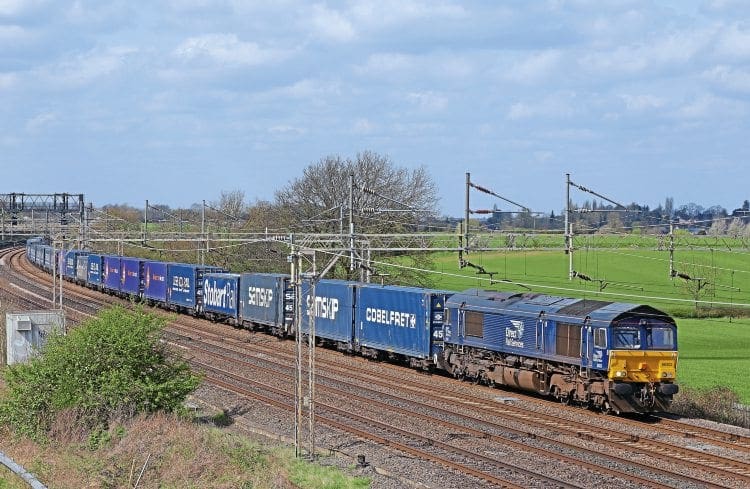After initial optimism, the IDA ‘twin’ intermodal flats have yet to achieve their full capability for Direct Rail Services due to ride issues over poor track. Gareth Bayer describes the rise and fall of the innovative WH Davis ‘Super Low 45’ and their slow return to service.
JUST a year shy of the design’s 10th anniversary, the ‘Super Low 45’ (SL45) or TOPS code IDA is again a regular sight on intermodal services out of Daventry International Rail Freight Terminal, principally to Purfleet and Mossend.

Launched with great fanfare at WH Davis’ Shirebrook workshops in April 2008, the semi-permanently coupled twin-set was designed with two particular issues at the forefront. The major design feature was the ‘Super Low’ 720mm deck height, which would allow the conveyance of 9ft 6in high-cube containers without restriction on the W8 gauge network, this being particularly useful for diversions and for serving new terminals.
This could not have been achieved without the use of the then new SCT Europe (Wabtec) Barber BLR14.25 ‘Low Ride’ bogie which sports wheels of just 577mm in diameter and a 14.25-tonne axleload. This is also a track friendly design so it qualifies for cheaper track access rates.
Enjoy more Rail Express Magazine reading every month.
Click here to subscribe & save.
Low height
The deck height compares well against its rivals, which broadly fall into the two camps of small bogied wagons and pocket/well wagons. Examples of the former include the Powell Duffryn/Greenbrier FLA ‘Lowliner’ (700mm) and the classic AAE Megafret (825mm), while the latter include the Thrall/EWS FAA (700mm) and the Rautaruukki KQA/KTA (475mm). By way of comparison, a typical container flat like an FEA-B has a deck height of 980mm.
Read more in the August issue of RE – on sale now!




